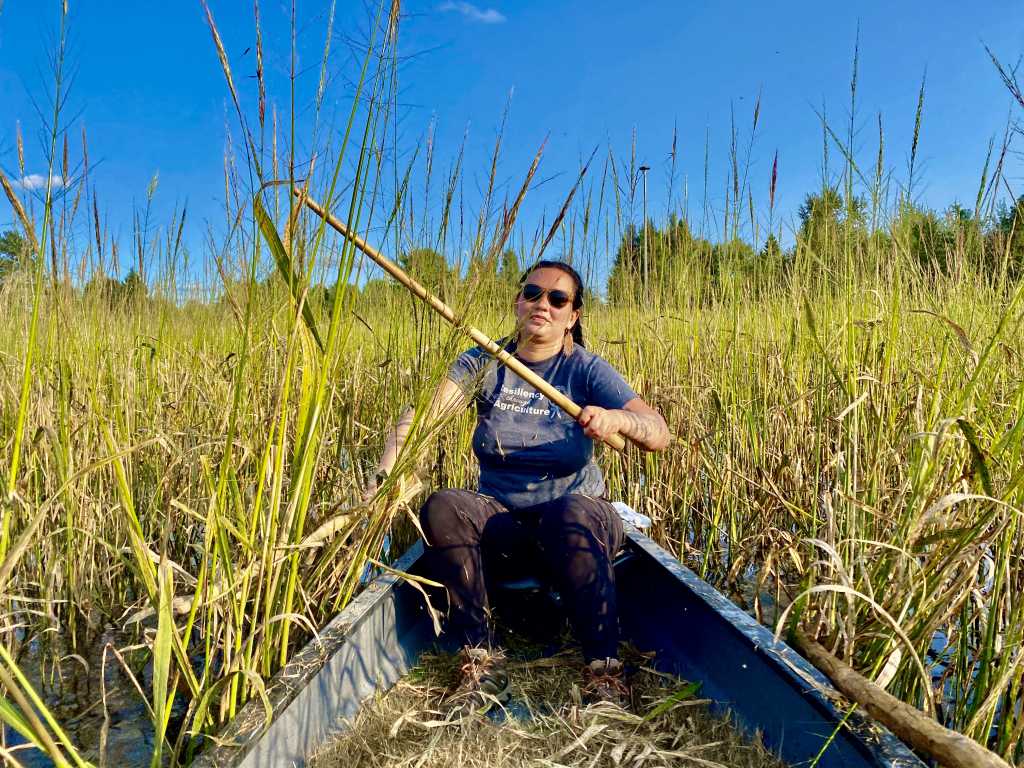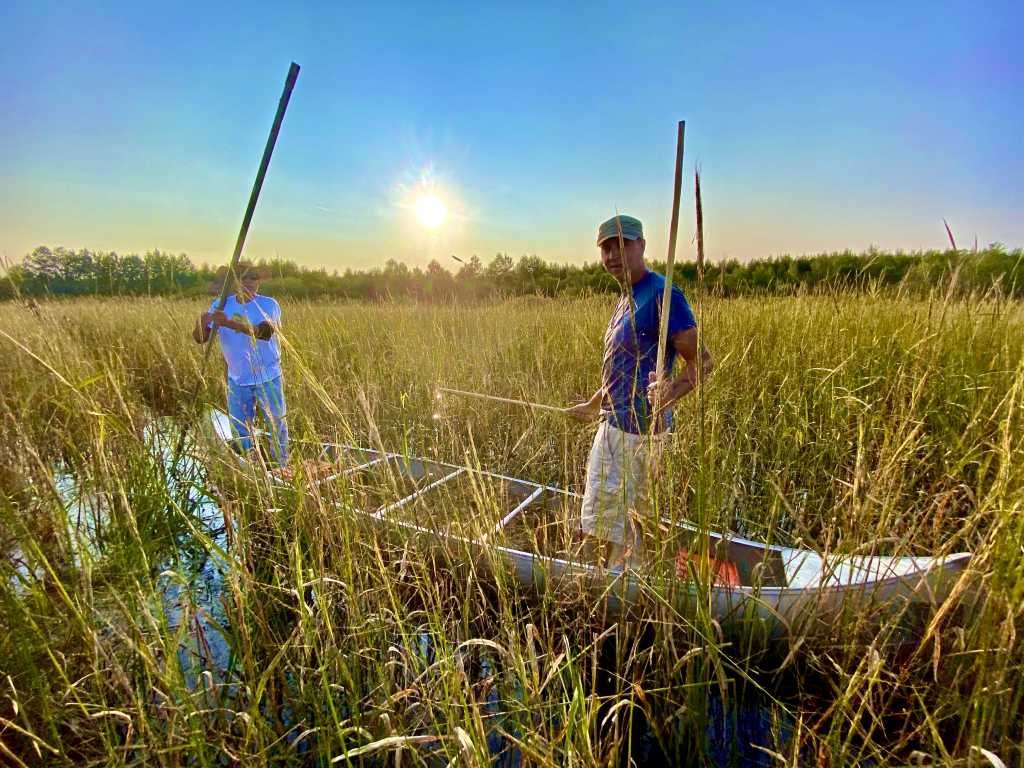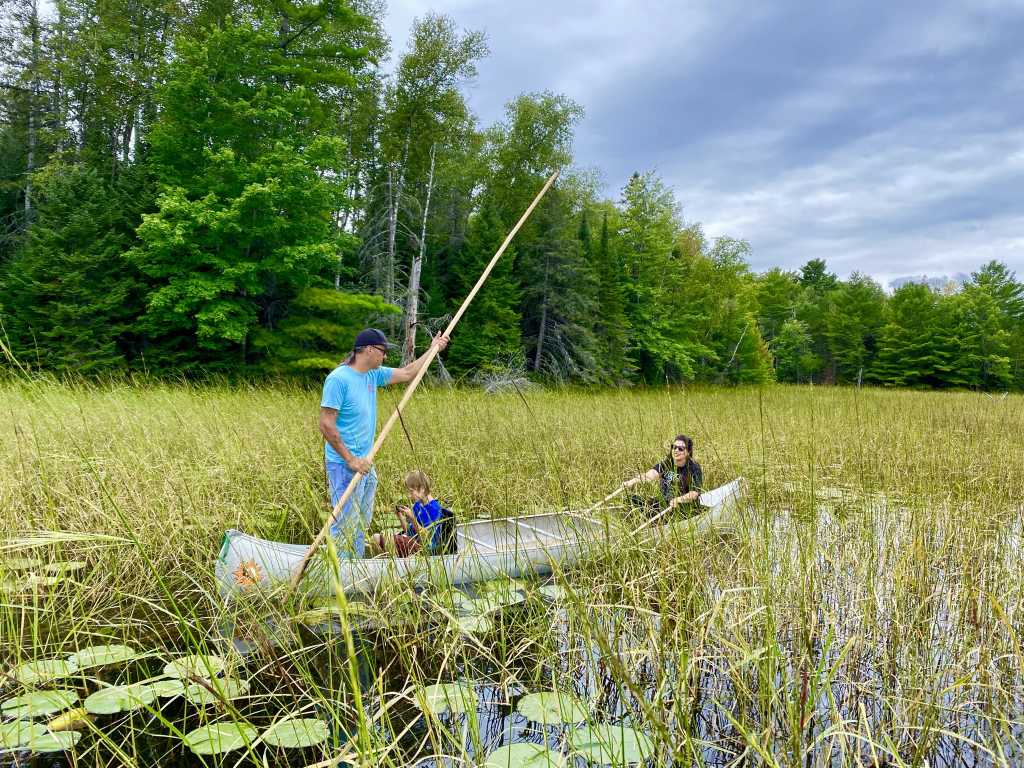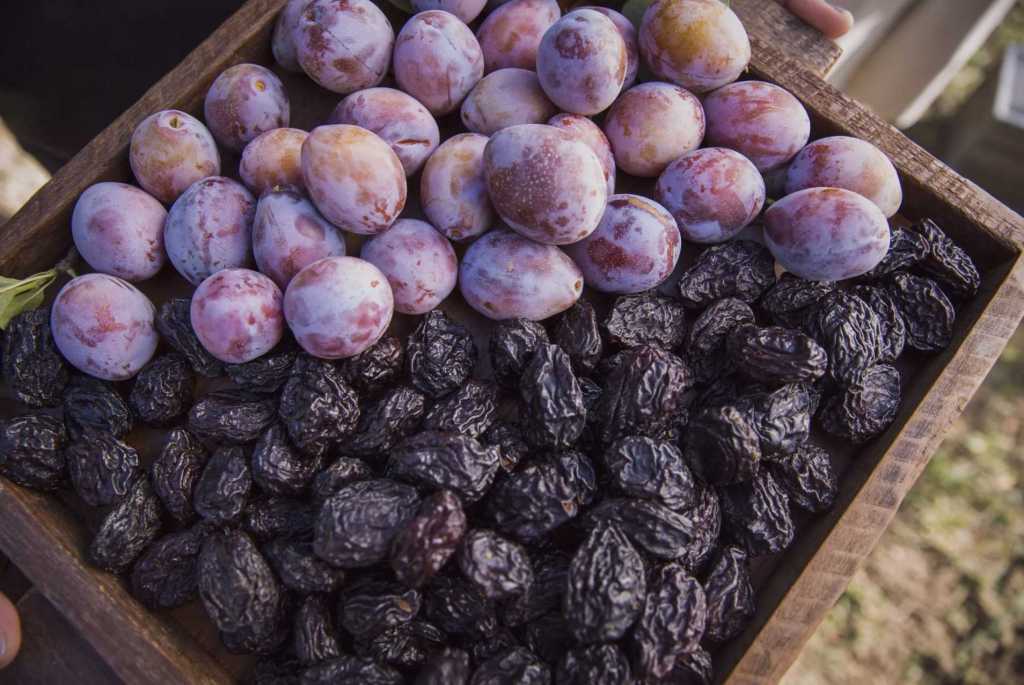Originating in Minnesota, wild rice has been an essential food source for Native Americans for centuries. Also known as water rice or Indian rice, the wild plant is not actually rice at all, but the seed of an annual sweet grass that grows naturally in the lakes and rivers in the northern states of the United States.
A Centuries-Old Harvest
In the past, the green delicacy was a staple food for tribal members of the Ojibwe Indians of North America. Not only was wild rice one of the most nutritious foods of their diet, but it also played an important role in ceremonies and is considered a sacred gift in their culture. The method to harvesting wild rice is a well-preserved, century-long tradition that hasn’t changed much over the centuries. In late summer, indigenous people would navigate their canoes through the shallow water and collect the rice by tapping a traditional stick called a “knocker” through the panicles. This way, the dark grains would fall into the boats, allowing them to be collected by hand. Remaining fruits that fall into the water serve as seeds, letting the lifecycle of the plant repeat and continue. Once collected, the rice would be spread out on the ground and sun dried within a couple of days. Alternatively, the rice can be parched until it can be further processed, which is done by treading carefully on the hulls so the rice kernels peel off. As a final step, the rice kernels are tossed into the air a few times by hand before they’re ready to be stored.

Due to this complex harvesting process, wild rice used to be a luxury food rarely found in stores. However, that changed once machine harvesting methods replaced the traditional way of harvesting by hand.

Nibiiwakamigkwe, Oneida Indian Anishinaabe and Métis, knocks the wild rice into her boat.
“Native Americans believe that food is a living being, and is celebrated and honored for the life that has been given.”
Intertribal Agriculture Council’s American Indian Foods Program
An All-Time Healthy Grain
The nutty and earthy tasting rice has a higher nutritional value than cultivated or farm grown varieties. While high in protein and amino acid lysine, the grain is low in fat. Today, wild rice is often used in salads, mixed with other rice varieties or replacing potatoes. A classic wild rice dish is the Instant Pot Wild Rice Soup with Mushrooms.
Furthermore, it contains very high levels of the minerals potassium and phosphorus. Whereas phosphate is needed for the formation of bones and teeth and plays an important role for the cell energy production, potassium is found in the body cells and plays an important role in the electrolyte balance of the cells.

Gluten-free by nature, wild rice is well fit for a health-conscious diet. Unlike other grains produced in the U.S., the naturally grown rice is not genetically modified and has not been altered in any way. Non-cultivated wild rice is not a certified organic rice – but for good reason. Non-cultivated wild rice from The Red Lake Nation Foods or Spike Lake Native Farms is 100% natural. These wild rice experts don’t grow their rice on farms, but in wild lakes and rivers of northern Minnesota.
The Fall Wild Rice Pilaf is a seasonal favorite for Vegetarians, combining wild rice with Delicata and Butternut Squash, cauliflower, apples, chickpeas and kale. This vibrant dish is not only decorative on the dinner table, but also a delicious and highly nutritious meal in fall. For those interested in Native American cuisine, the cookbook The Sioux Chef’s Indigenous Kitchen by Sean Sherman introduces modern indigenous cuisine of the Dakota and Minnesota territories with locally sourced and seasonal ingredients.
Tradition Today
Aside from its flavorful and nutritional value, wild rice is also relevant in traditional medicine. It is known to help against burns and heart complaints as well as pneumonia and stomach pains.
Originally grown and harvested in North America, wild rice has gained popularity amongst farmers in other states and regions. Different varieties of wild rice are now not just grown in their native environment, but also on certified farmlands. The largest rice field is actually found in California, where most of the wild rice is grown these days.

While the wild rice industry may have expanded, there are still many areas in the Great Lakes region where Sioux and Chippewa Indians maintain their traditions and nurture their culture by annually harvesting wild rice by hand. Their traditional harvesting method is fascinating to watch, as it requires patience and manual work. The carefully preserved tradition and wild rice harvest is a must-see when travelling the Midwest.
“Creating international market opportunities for American Indians is important to us, because it enables us to tell their unique story and share tribal cultures with the world.”
IAC’s American Indian Foods




